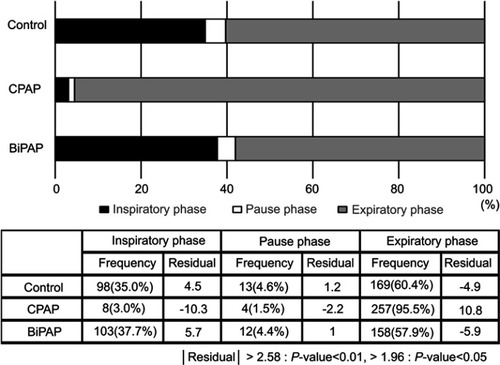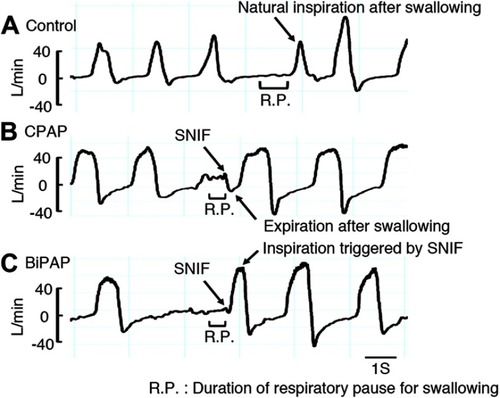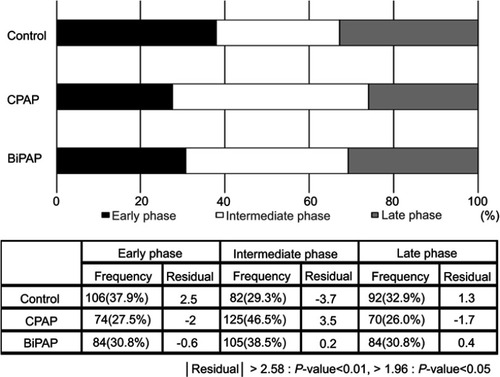Figures & data
Table 1 Correlations between breathing-swallowing coordination and patient characteristics
Table 2 Distribution of the occurrence of SNIF in the respiratory phase after swallowing
Figure 1 The occurrence of the respiratory phase after swallowing under the control, CPAP, and BiPAP conditions. Values are reported as frequencies, percentages, and residuals. The SW-E frequency was markedly increased during CPAP, and the SW-I frequency was lower than under other conditions (p<0.01). The SW-I frequency was higher during the control and BiPAP conditions than under CPAP conditions (p<0.01).Abbreviations: CPAP, continuous positive pressure ventilation; BiPAP, bi-level positive airway pressure ventilation; SW-E, expiration after swallowing; SW-I, inspiration after swallowing.

Figure 2 Representative respiratory flow signals during saliva swallowing under (A) control, (B) CPAP, and (C) BiPAP conditions. Note that inspiration after swallowing under the control condition is a natural inspiration, whereas inspiration after swallowing under the BiPAP condition is triggered by SNIF. Abbreviations: SNIF, the occurrence of swallowing-associated non-inspiratory flow; CPAP, continuous positive pressure ventilation; BiPAP, bi-level positive airway pressure ventilation.

Table 3 Distribution of the occurrence of SNIF in the respiratory pause for swallowing during spontaneous breathing under the control, CPAP, and BiPAP conditions
Figure 3 Distribution of the timing of swallowing in the respiratory phase (percentage) under the control, CPAP, and BiPAP conditions. The timing of swallowing in the respiratory phase is divided into three phases: early (<50% of the mean respiratory cycle from the onset of inspiration), intermediate (50–80%), and late (>80%). Values are reported as frequencies, percentages, and residuals. Note that swallowing in the early respiratory phase is decreased and that swallowing in the intermediate phase is increased under the CPAP condition compared to the control condition. Abbreviations: CPAP, continuous positive pressure ventilation; BiPAP, bi-level positive airway pressure ventilation.

